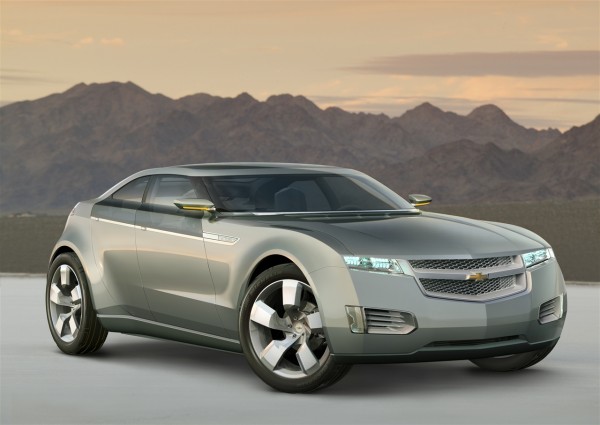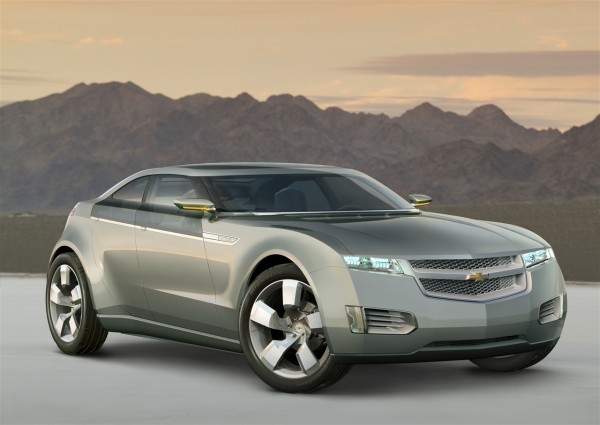 Is the Chevy Volt an electric wannabe?The Chevy Volt makes its debut in showrooms next month, but it is already being rolled out for test drives by journalists. And that’s stirring up the debate over whether it’s the real deal, as GM insists, or just an electric car wannabe.
Is the Chevy Volt an electric wannabe?The Chevy Volt makes its debut in showrooms next month, but it is already being rolled out for test drives by journalists. And that’s stirring up the debate over whether it’s the real deal, as GM insists, or just an electric car wannabe.
It has a little gas: Sure, the Volt can travel 50 miles on its lithium battery and while doing so, emit no pollution. But when you’re asking $41,000 for a car, you can’t have people worried about running out of juice without a plug in sight. So GM has added a small gasoline engine that would help maintain the charge on the battery as it starts to run down. That, according to the carmaker, extends the Volt’s range to 350 miles. But doesn’t that kinda make it a hybrid? The New York Times wrestles with that thorny question and others about the new plugmobile. For at least one question, though, there is a clear answer. Will the Volt get the 230 miles per gallon that GM once predicted? Ah, no.
When you wish upon a car: The coming of the electric car — pseudo or not — does raise another broader question: Can electric car batteries feed power back into the grid thus making a power system run on renewable energy more viable? If the answer is yes, that, in theory at least, could help compensate for the fact that the wind and sun don’t do our bidding. [Yale’s e360]
And in other green news:
Cheney days are here again: The New York Times weighs in with an editorial today pointing out how all those Republican climate zombies running for Congress are pretty much replaying the denial strategy orchestrated by Dick Cheney when he was vice president.
A few may genuinely believe global warming is a left-wing plot. Others may be singing the tune of corporate benefactors. And many Republicans have seized on the cap-and-trade climate bill as another way to paint Democrats as out-of-control taxers. In one way or another, though, all are custodians of a strategy whose guiding principle has been to avoid debate about solutions to climate change by denying its existence — or at least by diminishing its importance. The strategy worked, destroying hopes for Congressional action while further confusing ordinary citizens for whom global warming was already a remote and complex matter. It was also remarkably heavy-handed.
Mountain stew: The battle over mountaintop mining in West Virginia is heating up. Now an EPA regulator is recommending that permits be revoked for the largest mountaintop mining operation in the state. [Treehugger] This comes on the heels of the state’s lawsuit against the EPA for cracking down on mountaintop mining [Wall Street Journal], and of confirmation that a powerful House committee chair won’t push forward a bill banning mountaintop mining even though 170 House members support it. [The Hill]
Power to the purple: A study in Britain suggests that a big reason bats, birds, and insects get killed by wind turbines is that the giant spinning blades are the wrong color. Most of them are white or gray, which apparently attracts animals at night. Purple is apparently less appealing, and safer. [BBC]
Put a stalk in it: Or you could lose the blades altogether. There’s a new option out there called windstalks, giant metal sticks 180 feet high that generate power when they sway in the wind. [Discovery News]
Freedom’s just another word: Does Big Oil have too much influence over academic research? A new study by the Center for American Progress reveals that while oil companies have shelled out $880 million to universities in the past decade, they haven’t really bought into the concept of academic freedom. [GreenBiz]
Sunrise, sunset: This has been the best year ever for solar energy in U.S. But the glory days could be fleeting because developers are having a hard time getting financing for billion dollar projects, not to mention that the Energy Department hasn’t exactly been the model of efficiency when it comes to processing grants and loan guarantees. [The New York Times]
Tumblin’ ice: There’s more evidence global warming is starting to cause landslides and avalanches in high mountain ranges as glaciers and permafrost, the glue that holds steep mountain ranges together, melt. [New Scientist]



